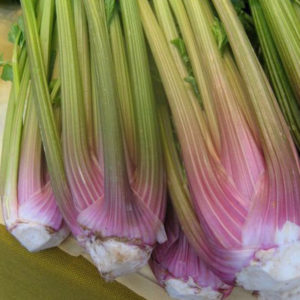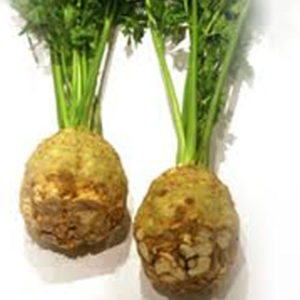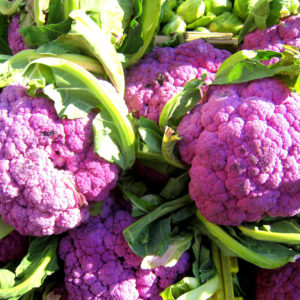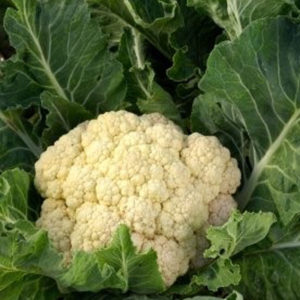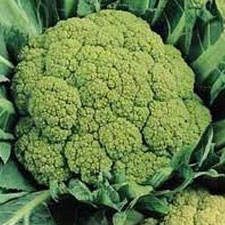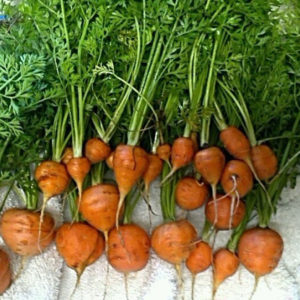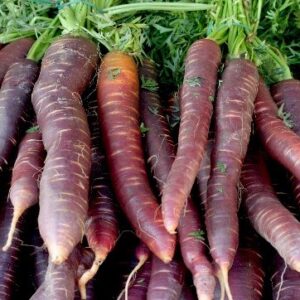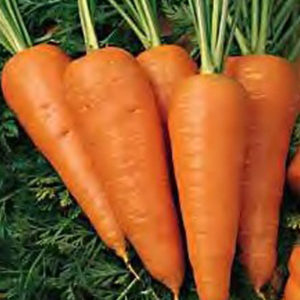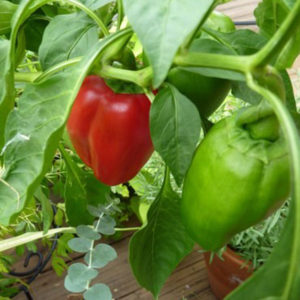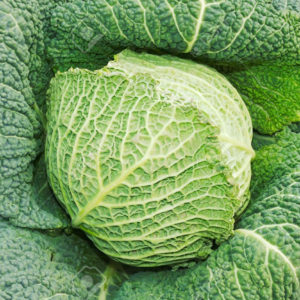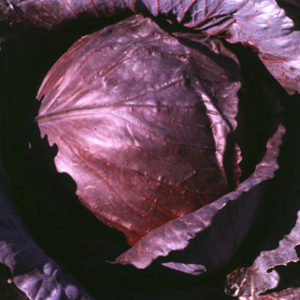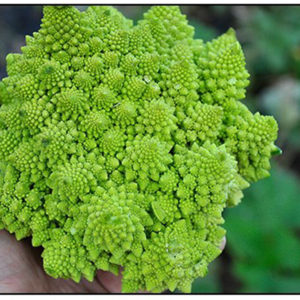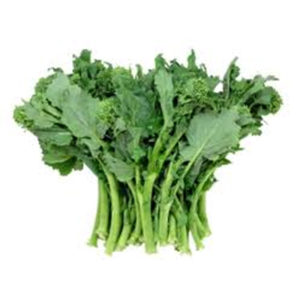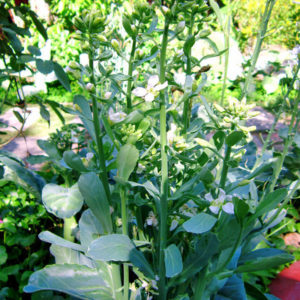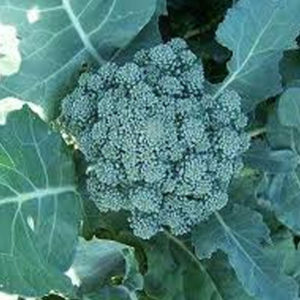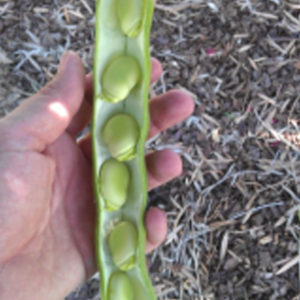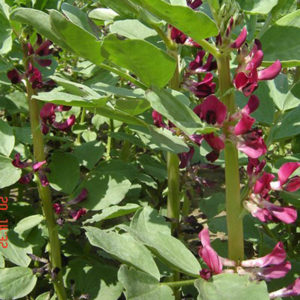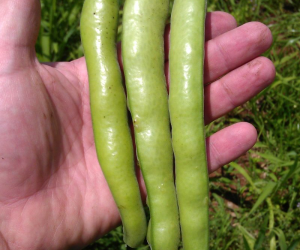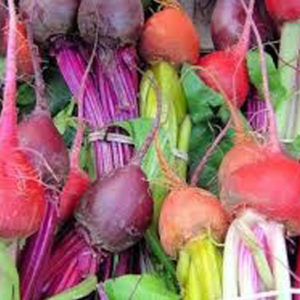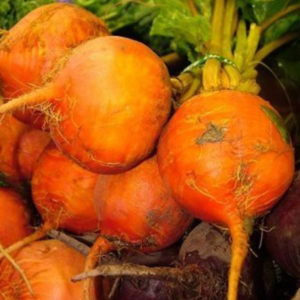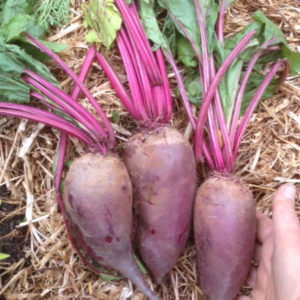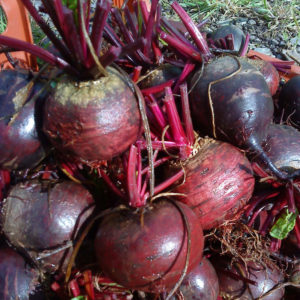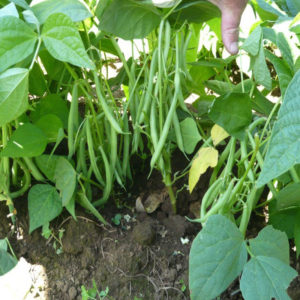-
Out of stock
 Apium graveolens var. secalinum Side picking celery more like Italian Parsley in look but definitely celery in flavour. Great if you can’t be bothered with all the fuss of blanching celery plants. Plant all year round in trays and transplant when no frosts.
Apium graveolens var. secalinum Side picking celery more like Italian Parsley in look but definitely celery in flavour. Great if you can’t be bothered with all the fuss of blanching celery plants. Plant all year round in trays and transplant when no frosts. -
Out of stock
 Brassica oleracea A rare combination of cauliflower colours that will all taste delicious yet with subtle differences.
Brassica oleracea A rare combination of cauliflower colours that will all taste delicious yet with subtle differences. -
Out of stock

Daucus carota Golden yellow colour with an even sweeter flavour than most orange carrots. Origins from the Middle East and first recorded around the 14th Century. Moist and crunchy best eaten raw or slightly steamed and will retain its colour.
-
Out of stock
 Daucus carota Lovely violet red skin with yellow orange interior. Very sweet with slight spicy edge. Origins from America’s organic movement. Very popular eaten raw or slightly steamed. Over cooking looses flavour, colour and goodness of most carrots.
Daucus carota Lovely violet red skin with yellow orange interior. Very sweet with slight spicy edge. Origins from America’s organic movement. Very popular eaten raw or slightly steamed. Over cooking looses flavour, colour and goodness of most carrots. -
Out of stock
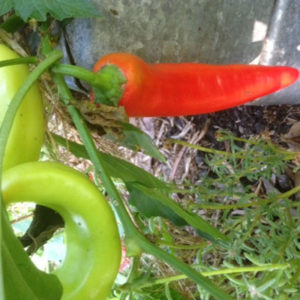 Capsicum annuum Long tapering fruit 20cm long goes from a pale translucent green to orange to red while still suspended from the vine. Gets sweeter the longer left. No hint of heat and lovely flavour.
Capsicum annuum Long tapering fruit 20cm long goes from a pale translucent green to orange to red while still suspended from the vine. Gets sweeter the longer left. No hint of heat and lovely flavour. -
Out of stock
 Capsicum annuum A combination of the colours and flavours available of the bell types, green, chocolate, gold and red.
Capsicum annuum A combination of the colours and flavours available of the bell types, green, chocolate, gold and red. -
Out of stock
 Capsicum annuum Sweet chocolate brown heirloom capsicum. Red flesh inside adds to the contrast. Matures green to brown.
Capsicum annuum Sweet chocolate brown heirloom capsicum. Red flesh inside adds to the contrast. Matures green to brown. -
Out of stock
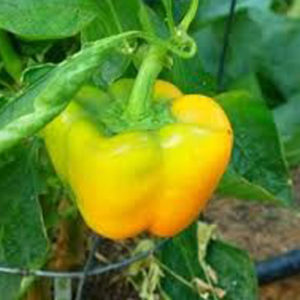 Capsicum annuum Yet another choice in the lovely bell peppers this one maturing green to gold and adds another lovely sweet fruit to the collection.
Capsicum annuum Yet another choice in the lovely bell peppers this one maturing green to gold and adds another lovely sweet fruit to the collection. -
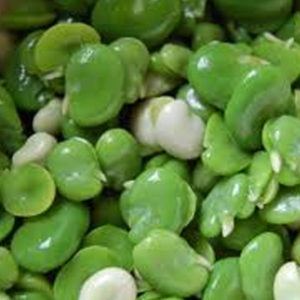 Vicia faba Gift from an Italian gentleman of these wonderful broad beans. Classic black white flowers on tall plant with huge amounts of pods. Seems to set very well. As usual stake and rope around plants early for wind protection later. Plant direct 15cm apart Autumn-Spring for Summer harvest. Consider a little lime and good compost in soil and mulch well. The secret of broad beans is don't overwater before germination or they'll drown. Once germinated not a problem.
Vicia faba Gift from an Italian gentleman of these wonderful broad beans. Classic black white flowers on tall plant with huge amounts of pods. Seems to set very well. As usual stake and rope around plants early for wind protection later. Plant direct 15cm apart Autumn-Spring for Summer harvest. Consider a little lime and good compost in soil and mulch well. The secret of broad beans is don't overwater before germination or they'll drown. Once germinated not a problem. -
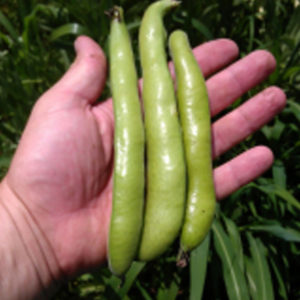 Vicia faba Long plants up to 120cm Aquadulce are the most common and most reliable to grow for those who are wanting a good tasty feed of broad beans. Pods are around 15cm with around 5 seeds per pod. Flowers are white with purple touches. Broad beans can be planted Autumn and Winter for a Spring crop although the flowers can be affected by frosts.
Vicia faba Long plants up to 120cm Aquadulce are the most common and most reliable to grow for those who are wanting a good tasty feed of broad beans. Pods are around 15cm with around 5 seeds per pod. Flowers are white with purple touches. Broad beans can be planted Autumn and Winter for a Spring crop although the flowers can be affected by frosts. -
Out of stock

Beta vulgaris Sweet deep red beet with fine edible leaves. Excellent for spring and autumn.
-
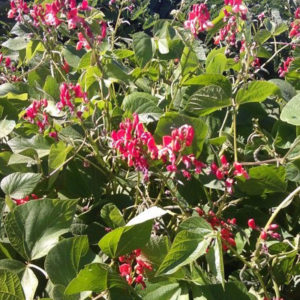
Phaseolus coccineus Originally from the mountains of Central America, Scarlet Runners are often grown as an ornamental as the flowers with contrasting green leaves are dramatic & beautiful. Planted in spring the climber can produce flowers all summer till autumn when the beans begin to set in the cooler weather. Beans when picked young are long flat tender and very tasty. Or let beans dry on plant and are considered tasty.
-
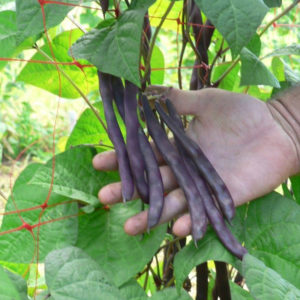 Phaseolus vulgaris Produces pink flowers, then deep purple tender oval stringless pods up to 18cm long. Very abundant over a long period. Needs staking or a strong trellis growing an impressive 2 metres or more. Always reliable and worth picking when pods are young. Can be eaten raw and when cooked they will turn green.
Phaseolus vulgaris Produces pink flowers, then deep purple tender oval stringless pods up to 18cm long. Very abundant over a long period. Needs staking or a strong trellis growing an impressive 2 metres or more. Always reliable and worth picking when pods are young. Can be eaten raw and when cooked they will turn green. -
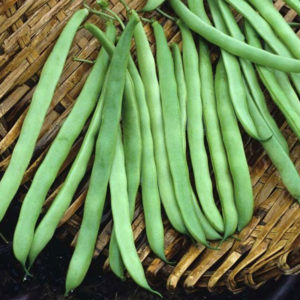 Phaseolus vulgaris This lovely ‘politically incorrect’ bean derives its name for its ease of growing and one of the first stringless beans making preparation much easier…for the housewife nearly 200yrs ago! Tender, productive fleshy broad green climber up to 2 metres. Rare now and needing reviving as its flavour compares well with today's good green bean.
Phaseolus vulgaris This lovely ‘politically incorrect’ bean derives its name for its ease of growing and one of the first stringless beans making preparation much easier…for the housewife nearly 200yrs ago! Tender, productive fleshy broad green climber up to 2 metres. Rare now and needing reviving as its flavour compares well with today's good green bean. -
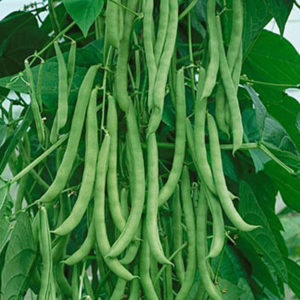 Phaseolus vulgaris Once the most popular bean in the south of America this bean has been first mentioned in 1864 as Texas Pole. A green climber it can grow very tall producing pods up to 20cm long. Fleshy, curved and broad-oval pods with seeds filling to the tip and edge but not crowded. Very reliable, flavoursome, abundant and early maturing. Can be picked fresh or allow pods to dry and save beans.
Phaseolus vulgaris Once the most popular bean in the south of America this bean has been first mentioned in 1864 as Texas Pole. A green climber it can grow very tall producing pods up to 20cm long. Fleshy, curved and broad-oval pods with seeds filling to the tip and edge but not crowded. Very reliable, flavoursome, abundant and early maturing. Can be picked fresh or allow pods to dry and save beans.

